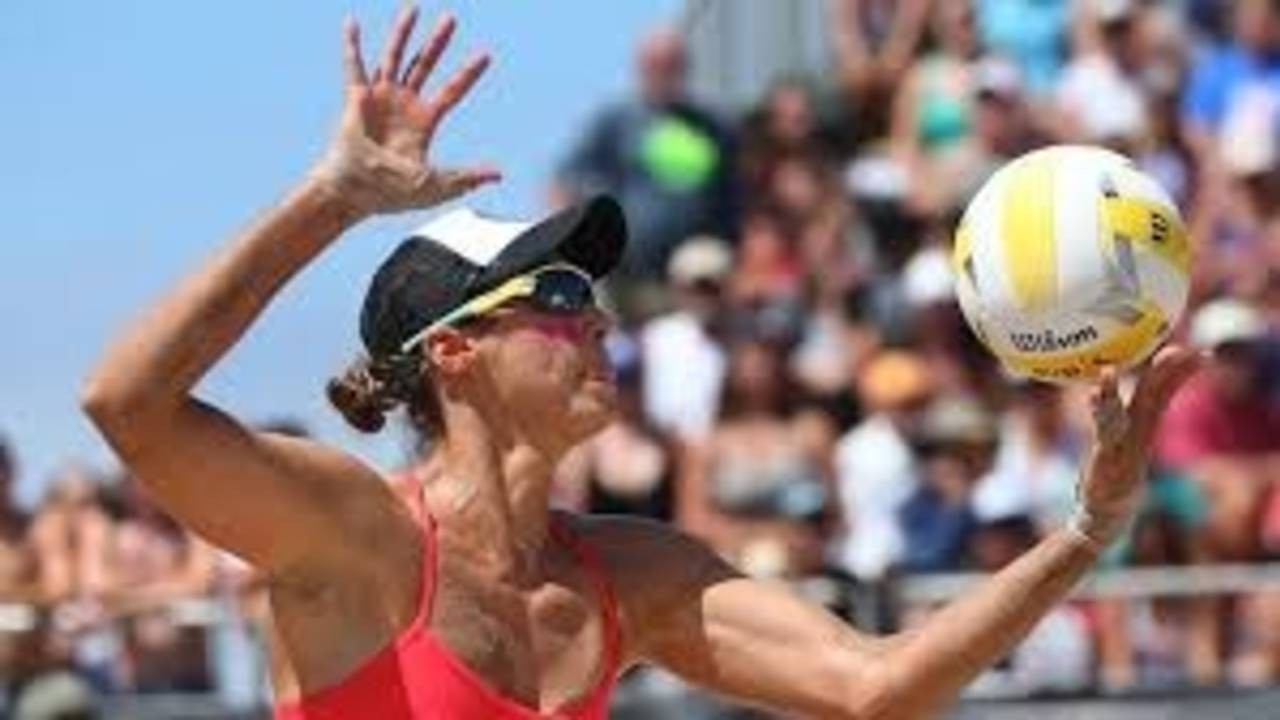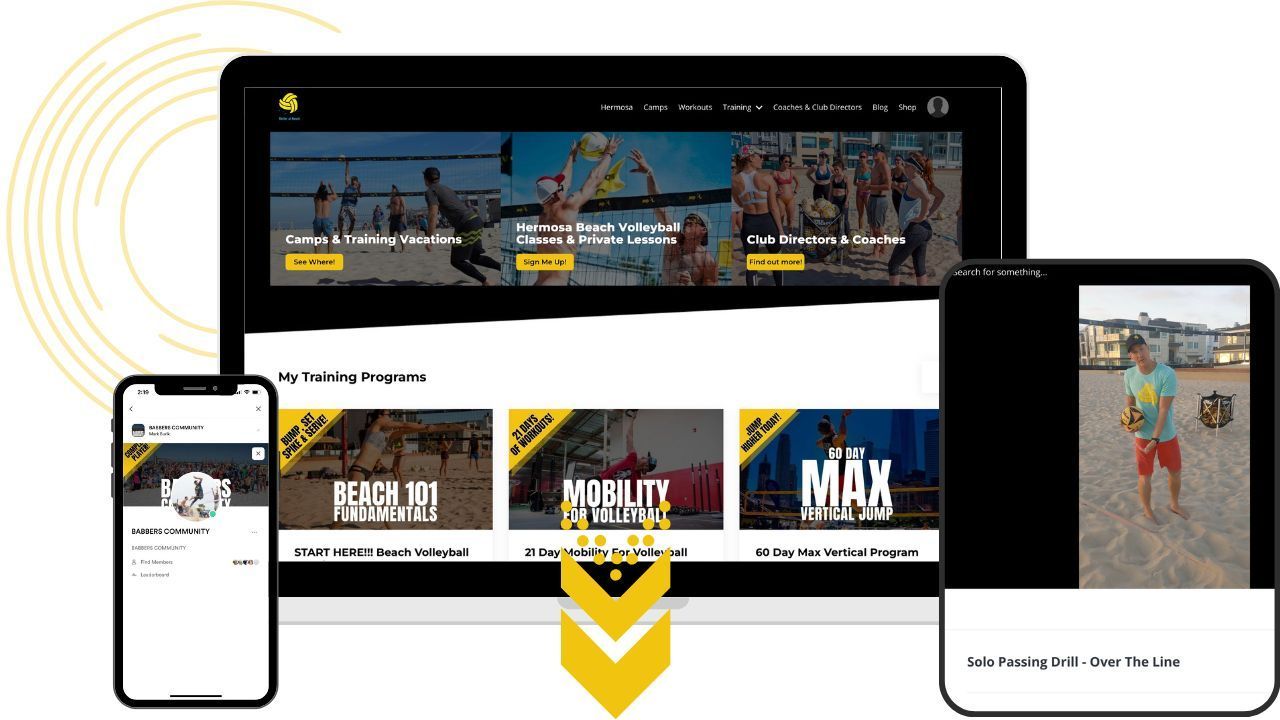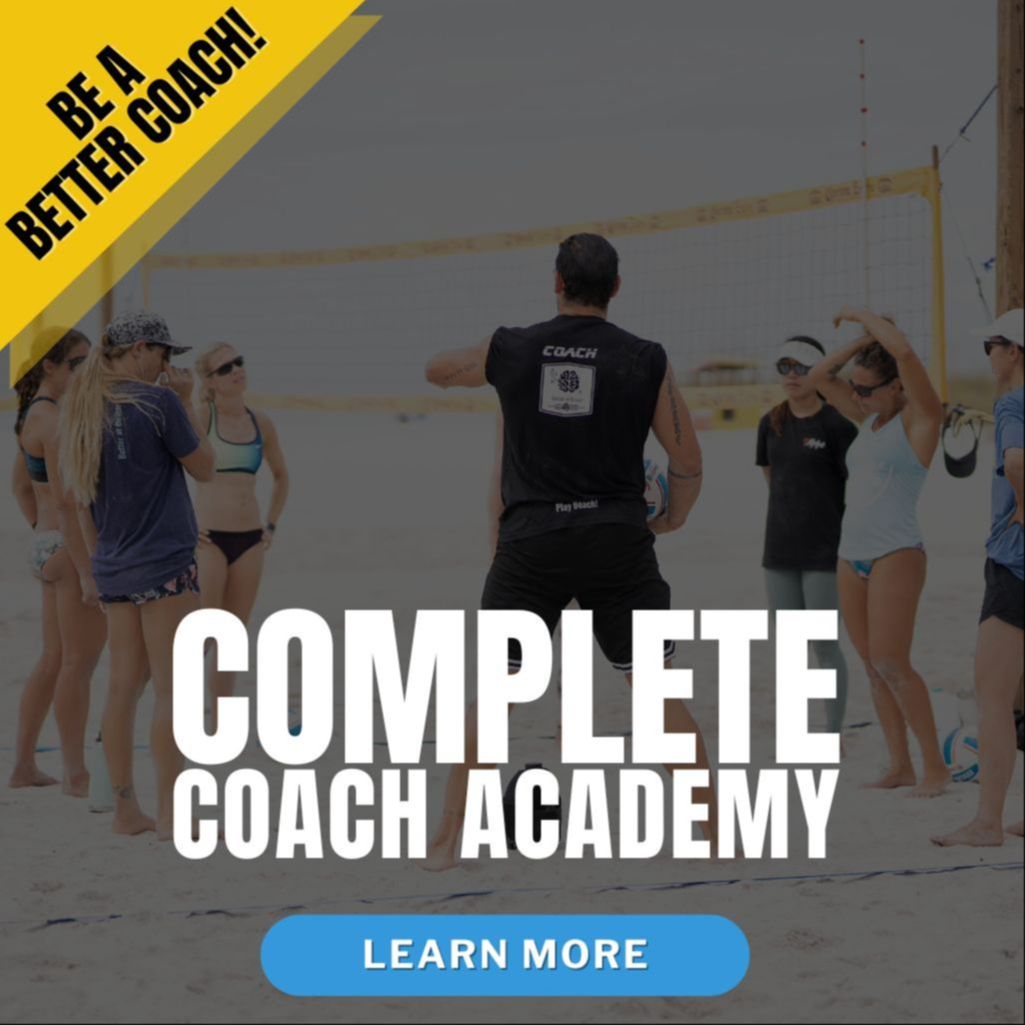
Float Serving in Beach Volleyball
It doesn't come in particularly fast. It isn't likely to make many, or any, Instagram highlights. It certainly isn't going to draw huge crowds at your beach volleyball tournament. But one of the most effective weapons in the game of beach volleyball is a float serve.
If you ask 100 professional beach volleyball players if they'd rather pass a float serve or a top-spin jump serve, most -- especially if it's on a windy day -- would vote for the top-spin serve, any day of the week. Nobody likes passing float serves.
A float serve is a bit of a misnomer. It doesn't so much float as it does dance. A properly hit float serve won't have any spin on it, making it incredibly susceptible to the wind and any air pockets the ball might find. This produces an effect similar to a knuckleball pitcher in baseball, where the ball moves and wiggles and dips, dives, and ducks in no predictable manner. It's incredibly difficult to pass, and the best part: It's not a difficult skill to learn.
Float serving, unlike jump serving, isn't tiring. It doesn't require much, or any, explosive movement. It simply requires a flat hand, a little bit of practice, and a tutorial in the video below.
In the video below, AVP pros Mark Burik and Brandon Joyner discuss the float serve, and its ability to rack up the points in a short amount of time.
Be sure to check out our full line of training programs, available now at BetteratBeach.com.
Raise your game to the next level with one of our popular training camps for a totally immersive beach volleyball experience. Sign up today!
How to hit a beach volleyball float serve
Brandon Joyner:
With this video, what we're gonna do is we're going to talk about some tips that can hopefully lead to some points on some good float serve. Mark, did you know that you can score a point on your serve? Yes. You did know that? Yeah,
Mark Burik:
Man, I was second in the nation in ACEs per game 2008. 2008?!? Yeah, that's a while ago, but.. well you know.
Brandon Joyner:
Well, even though his answer was yes, it's probably because he's a stud on the volleyball court, but I think a lot of people, especially if you're a beginner or an intermediate, you don't realize that you can score points on your surf. One thing that we are going to talk about today, and hopefully these tips will lead to more points because our goal as servers should not just be to get the ball in the court over on the other side of the net. Our goal should be to put the other side in as much trouble as possible. A lot of times we see people go back to serve and they're okay with just serving a person or they're okay with just getting the ball over on the other side of the net. If that's the type of player that you are, you need to make sure that you listen to all of these secrets, so hopefully you can start turning your serve into some points.
Mark Burik:
But before we get into that, make sure you hit that subscribe button. I don't know where it is, I've never seen YouTube before, but figure it out. Hit the subscribe, and then you can get notifications for our videos later. Let's start making some secrets. Boom.
Mark Burik:
Brandon's a know it all. Don't be like him, okay? Just because you've gone over, standing floats, served does not mean that you know all of the secrets and you know how to make it as good as possible. So we're going to go over this and we're going to help you and we're going to get you from, maybe you're at level 5. Brandon is at level 6 we're going to get him to level 13 okay. So one of the biggest things we see is that in the end, serving is an accuracy skill, right? And the most important thing to be accurate is that we have a simple process. So we see a lot of people tossing with two hands and then loading.
Mark Burik:
So he's doing two actions, he's tossing and then loading when in the end he's just going to need to be accurate. So instead of going through this, we're going to ask him to put the ball in his left hand out front and load his right hitting arm. We want his elbow above his shoulder girdle and we want his hitting hand high and back so that once he tosses, he's got one motion, right? That's gonna make him simple. You wouldn't see somebody in the world series of darts going like this. Well, you probably suck at darts.
Want to show your support and help us make more content? Buy a cool beach volleyball
 |
 |
|---|---|
| Triblend Tee | Skill Attack Volleyball Machine |
Mark Burik:
Next item, to be simple that we see a lot we see ruined a lot is when people start their toss. This ball weighs half a pound-ish? Something like that. So you don't need your biggest, baddest muscles in order to lift it up. So don't squat and lift just to lift this ball because a good float serve toss is only six inches. You should be strong enough to lift the half pound ball six inches. Perfect.
Mark Burik:
It seems heavy but it's not so no leg use. He's not squatting and dropping and you want to make sure that you're not doing either. Okay? From there once he's loaded, small six inch toss step and strike with the heel of your palm. A lot of people miss this really, really important key. If you want to get some good velocity and accuracy with your float serve, you're going to use the heel of your palm. Don't let it hit the middle because this changes the density. You might contact the fingers and then you're going to have a different firing mechanism anytime you serve. So if you want to have a hard fast float serve that jumps off your hand and is less readable, use the heel of your palm and you're going to have a muscled hand to do that. Make sure that you flex your hand and it's not striking here. You should hear a thud and not a slap when you serve the ball. Give me a thud.
Brandon Joyner:
So with this secret it's for having a quick flat float serve. Okay, keep that in mind. This is not if you're trying to serve somebody short or if you're trying to serve somebody very high and deep. This is for a quick flat float serve. Quick flat float. Nice. Nice. One thing that I like to talk about is before I go back to serve, I draw a line from the top of one antenna to the other antenna that gives me a zone. Okay. Or another rectangle just above the net. My goal is to serve that ball through the zone and then hit the last three feet of the court. The closer you get to the net, that serve is going to be in the air for the shortest amount of time possible. So if we keep that ball flat close to the net and we hit this ball deep into the court, it's going to get to that passer, it's going to get on that passer as quick as possible, which is going to give them less time to react and make the right pass. Let's take a look at what it should look like.
Mark Burik:
With some receivers, it's not going to be enough to bring heat on them because their ball control is just that good when you hit anywhere in their zone. So if you go against somebody who you just keep bringing heat and they just keep passing nails, you're going to have to come up with another solution. That solution is going to be to move the ball outside of their sweet spot. So Brandon puts his arms up here out to the side, this area right here from his shoulders to his knees or his shins, that's his sweet spot. And if any ball crosses within this zone, no matter how fast it comes, if he's that good of a passer he's going to stick it. Instead, you want to beat somebody by putting them on the move and then making them pass, we have to serve so that the ball crosses somewhere outside this sweet spot and then lands either in front or behind him.
Mark Burik:
So if I can prevent it from going through this area, then I can get him on the move and I have a better chance of getting an ACE. So there are a few ways to get the ball outside of their sweet spot and unlike we just showed you, now it involves using different angles of art and different Heights because there are two types of short serves, one that we call a dead ball. If you play baseball, you might know it as a changeup where the ball has the same angle or the same trajectory, but you hit it lighter and it just falls short. The other one, if you want it to land really close to the net, you're going to have to put some arc on it. Finally, you have your jumbo or your rainbow serve where it looks like an easy soft float serve because you're hitting it high, deep and slow. But you're forcing that passer to move all the way back to the line just to get a pass. You're usually going to screw up their approach because they're going to end up in a sprint, but most importantly, they're going to have to move their feet to the ball and some people don't like moving their feet. They're going to end up tomahawk-ing and if they tomahawk in serve, receive, you already won.
Mark Burik:
First serve is the deep jumbo or rainbow serve. We're trying to get the passer to move back just to touch the ball so you can not let it cross in that sweet spot.
Brandon Joyner:
Oh, I got it. Oh, I got it. You're the man.
Mark Burik:
If you can make him do this, you're going to win that first battle. We're only going to introduce you to two types of short float serves. First type of short serve is going to be our steep short serve and that's when you're going to put the ball up a little bit higher to make sure it falls really tight to the net. There's another service that we're going to go over right after this called the dead ball. The dead ball has the same trajectory as the hard flat, fast float serve and it's just going to die as soon as it gets over the net so that it looks like it's got the same trajectory and it freezes the passer. Here's the steep short serve.
Brandon Joyner:
Ooh, you got this Brandon.
Mark Burik:
Here are a few clips of me trying to hit a good dead ball float serve.
Mark Burik:
If you want to learn anything beach volleyball, you can come visit us at Better At Beach maybe come out to our training camp.
Brandon Joyner:
Or you can go to BetterAtBeach.com And check out our full video library. It's got tons of great drills and explanations on how to do everything correctly.
***
Join our email list and Get your FREE Drill Book > www.betteratbeach.com/freebeachvolleyballdrillbook
If you want to get more power, more accuracy, more consistency and MORE ACES as well as the defensive mindset and strategies that win matches, you should sign up for our Beach Volleyball Mastery. We take you through the basic mechanics of serving and then work all the way up to advanced tactics and how to beat certain types of hitters and teams. Keep the other team on their heels and never give them a chance to get a comfortable attack
We also show you how to use the various types of standing float serves as well as jump floats, jump spikes and skyballs! Each serve should be used against certain types of players! Once inside the membership, you’ll be able to unlock “Power, Accuracy and Aces: The Serving Master Class" which will build you an arsenal of more strategic, more accurate, more powerful serves from the ground up. It comes complete with rehab protocol, gym exercises you need to increase arm speed, solo drills you can do at home, partner drills, accuracy exercises and elite throwing and hitting drills.
We also include with 9 more skill courses AND our 60 Day At-Home Max Vertical Jump Training Program.
Once you sign up, you'll be able to watch the in-depth tutorials, film your “before” videos, start and film your at-home drills and begin posting to our Private Facebook Group. Then, our coaches will break down your mechanics and spacing and timing at our weekly online meetings. Yes, that means we look at YOUR videos and we coach YOU!
Facebook Group CTA VolleyChat! Get Better at Beach Volleyball for posts about common questions/ problems > https://www.facebook.com/groups/betteratbeach
SIGN UP NOW AND LEARN HOW TO WIN FROM THE PROS.





